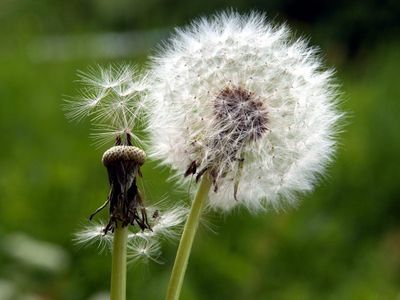 Environmental & Science Education
Environmental & Science EducationSTEM
Biodiversity
Biological Evolutiion
Engineering
Edward Hessler
Most of the dandelions had changed from suns into moons.--Vladimir Nabokov
My favorite common name for dandelions (Taraxacum officinale) is blowballs although lion's tooth is a close second. The latter is from the French--dent-de-lion.
The mechanism of the flight of dandelion seeds has now been analyzed and and was reported in a paper in the journal Nature. The structure is well known: The seeds are suspended from a parachute-like stalk. The parachute itself, known as a pappus, is made of many bristles. Blow and off they go.
The secret to their flight is the spaces between the bristles. Writing about the research, Jeremy Rehm notes that "When some animals, aeroplanes or seeds fly, rings of circulating air called vortices form in contact with their wings or wing-like surfaces. These vortices can help to maintain the forces that lift the animal, machine or seed into the air.
"Researchers thought that an unattached vortex would be too unstable to persist in nature. Yet the light, puffy seeds of dandelions use vortices that materialize just above their surfaces and lift the seed into the air."
The effectiveness of the dandelion's parachute depends on the spaces between the bristles, "an example," according to Rehm's reporting," of how evolution can produce ingenious solutions to the most finicky problems." According to Rehm's article, the number of bristles per seed between 90-110 bristles, a range one of lead authors, Naomi Nakayama calls "scary consistent." This consistency makes all the difference. If you read Rehm's report you will find out why.
Rehm's report which includes a short video explaining and showing the details may be found here.

 CGEE Student Voice
CGEE Student Voice
No comments:
Post a Comment